Inside The New York Botanical Garden
Sonia Uyterhoeven
Posted in Gardening Tips on March 15 2011, by Sonia Uyterhoeven
A month ago we discussed the history of the sweet pea (Lathyrus odoratus) with the focus on uncovering which sweet peas will grow well in the short springs and the warm summers in the New York Area. Some varieties are definitely more heat tolerant than others and the new day neutral varieties such as ‘Winter Elegance’ and ‘Velvet Elegance’ flower up to 2 weeks earlier than older varieties.
So what are the basics for getting your sweet peas in the ground and growing? If you live in a cool climate and would like to get an early start then you can plant them indoors 6-7 weeks before the last frost date. If you would like to wait and direct sow then wait until a month or so before the last frost date. In the New York area you will be sowing them outdoors somewhere between the beginning and middle of April.
Sweet peas will germinate faster if you either nick the seed coat or soak them for several hours in lukewarm water. Sweet peas like to be planted in full sun although if you live in a place where the summers get hot quickly you can try morning sun and bright afternoon shade.
You will improve growth is you amend the soil ahead of time with either compost or aged cow manure. Sweet peas prefer good drainage. Plant your seeds one inch deep and space them 2-3 inches apart. Once they begin to grow, thin them out to 5-6 inches.
You will encourage lateral branches and get a fuller plant if you pinch your sweet peas back when there are 3-4 sets of leaves. Pinch back to 2-3 sets of leaves just above the leaf node.
Young seedlings are in danger of being eaten by slugs, snails and birds. Cover the young plants with bird netting and used your favorite slug repellent when the seedlings are young and tender.
Mulching and keeping your sweet peas well watered will improve their growth. Once they start to produce flowers make sure you pick them on a regular basis to promote more blooms.
Smaller dwarf varieties such as ‘Pink Cupid’ can stand on their own, but most sweet peas need vertical support to thrive. Remember that sweet peas have tendrils that like to cling to and wrap around supports. Galvanized wire cages make easy supports. Bamboo trellises or teepees also provide good places for peas to climb.
Sweet peas are not related to edible peas – they are poisonous and should not be eaten. They make wonderful cut flowers and their fragrance is one of the nicer fragrances that you will find in the spring.
Posted in Gardening Tips on March 8 2011, by Sonia Uyterhoeven
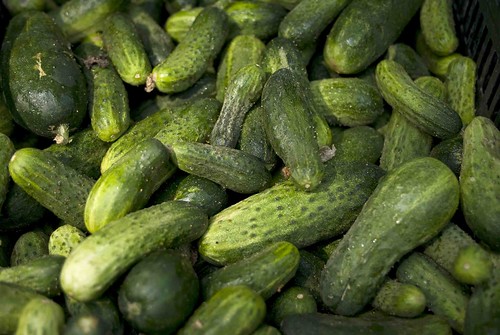 Many of you may be asking yourself; ‘what do plant breeders do in their spare time’? This thought never crossed my mind until I attended an in-house lecture at NYBG by an Israeli plant breeder. The plant breeder in question, Harry Paris, was born and raised in Brooklyn and has spent the past 30 years working and living in Israel.
Many of you may be asking yourself; ‘what do plant breeders do in their spare time’? This thought never crossed my mind until I attended an in-house lecture at NYBG by an Israeli plant breeder. The plant breeder in question, Harry Paris, was born and raised in Brooklyn and has spent the past 30 years working and living in Israel.
He opened the lecture by explaining his interest in history; as a plant breeder he maintained that it is easier to know where you are going if you know where you have come from. That’s food for thought whether you are discussing Curcurbit or life in general.
What is a Curcurbit? I was once named one of my home gardening demonstrations ‘Curcurbit Crafts’ and was asked to change the title due to the concern that the public would not know what they were in for. I tamed the title to ‘Autumnal Centerpieces’ and ‘Groovy Gourds’. Curcurbitaceae is the botanical family that includes cucumbers, squashes, gourds, pumpkins and melons.
Dr. Paris proceeded to explain how you investigate the history of a Curcurbit. He used an interdisciplinary approach where he drew information from botany, horticulture, food use, archeology, history, linguistics and iconography.
As the talk unfolded it became apparent that Dr. Paris was the Sherlock Holmes of the cucumber. He was tracking references back into the past – back to the Romans, the ancient Greeks, and ancient Egyptians.
Don't curb your curcurbit knowledge! Read on for more of Dr. Paris' 'cuke history lesson
Posted in Gardening Tips on March 1 2011, by Sonia Uyterhoeven
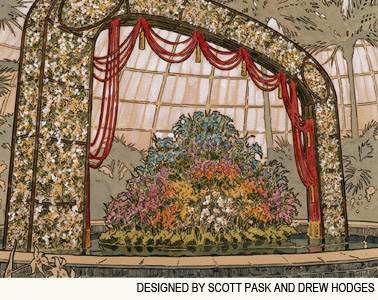 In ancient Greek the word for theatre (theatron) means a place for seeing. As the New York born actress, Stella Adler once said ‘It is the place people come to see the truths about life’. The Orchid Show: On Broadway with the award-winning set designer Scott Pask and image maker Drew Hodges will be celebrating the universal truth that myriad members of the Orchidaceae family are some of the biggest divas in the plant world.
In ancient Greek the word for theatre (theatron) means a place for seeing. As the New York born actress, Stella Adler once said ‘It is the place people come to see the truths about life’. The Orchid Show: On Broadway with the award-winning set designer Scott Pask and image maker Drew Hodges will be celebrating the universal truth that myriad members of the Orchidaceae family are some of the biggest divas in the plant world.
In the 19th century, Covent Garden used to rely on the brilliant white light produced by lime or calcium flares to illuminate their leading ladies hence the expression “in the limelight”. Every year when the long and dreary winter extends endlessly the Garden explodes with light, color and sensual perfumes from the Orchid Show.
Brassia or spider orchids will send shivers up your spine; Oncidium or dancing ladies mimic tiny flamenco dancers dangling from their flowery spikes and their perfume is often enticing. Ondontoglossum will grab you with the barbs on their labellum; mother natures’ way of giving insects something to take hold of when they feed and pollinate. One of my favorites, Zygopetalum will be giving the ensemble a run for their money with their exquisite hyacinth perfume.
Leave the lime flares at home – most of these orchids like bright dappled light similar to the conditions of their native rainforest homes. The Zygopetalum is semi-terrestrial and prefers a slightly damp moisture-retentive mix that is capable of providing good drainage. The rest of the troupe are epiphytic and do best if you saturate them with water (a heavy rain storm) and then let to begin to dry out. Many of the orchids you will find in the show are complex hybrids that are easy to care for.
With the theatrical backdrop, the producers of the show will make sure that they look their best for opening night. These ladies have their routine down and will not disappoint. The Orchid Show will be open on Saturday March 5th (Friday, March 4th for Member’s Only) and runs until Monday, April 25th.
Home Gardening Demonstrations on basic orchid care will be given on Saturdays and Sundays at 2 and 3:30 p.m. There will also be Cabaret performances in the afternoon. Visit our website for full details of events.
Posted in Gardening Tips on January 18 2011, by Sonia Uyterhoeven
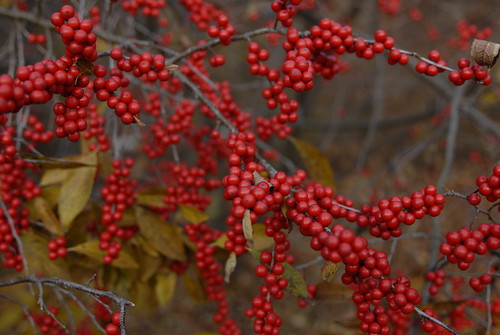 Last week we looked dwarf conifers as container plants. Single containers – particularly with a small to medium sized tree or shrub can happily fill a corner on a patio. Sometimes, however, they look a little lonely, particularly if they don’t have enough pizzazz or weight to hold up on their own.
Last week we looked dwarf conifers as container plants. Single containers – particularly with a small to medium sized tree or shrub can happily fill a corner on a patio. Sometimes, however, they look a little lonely, particularly if they don’t have enough pizzazz or weight to hold up on their own.
Many container plants look better when clustered in groups to form miniature landscapes. There is great latitude in how a homeowner can approach this task. The containers could all be the same giving a uniform look or you could go for a more eclectic arrangement of colorful and expressive pots. One way will give a formal feel to the arrangement while the other will give it an ‘arts and crafts’ feel.
You likewise have endless possibilities with your plant choices. Are you trying to create the feel of a miniature woodland on your patio, replicate a foundation planting or have a foray into a mixed perennial garden? It is important to have a vision of what you would like to create before you start selecting your container plants.
Read More
Posted in Programs and Events on January 14 2011, by Sonia Uyterhoeven
 |
Sonia Uyterhoeven is Gardener for Public Education.
|
The Garden will be screening A Sea Change: Imagine a World Without Fish on Saturday, January 22 at 2 p.m. to be followed by a moderated discussion with the director and narrator. Admission is free to all Garden visitors. Stop by any ticketing booth on-site to pick up your complimentary ticket.
I watched a new documentary recently that was a powerful and beautiful tutorial on how we educate, how we learn, and how we inaugurate change on a personal level. It was close to my heart since the topic was environmental stewardship.
A Sea Change: Imagine a World Without Fish is a movie about how the increase in carbon emissions and the raising level of acidity is affecting ocean life. It is a movie that will be enjoyed and should be seen by everyone.

The film is the story of a man, retired history teacher Sven Huseby, who is touched by Elizabeth Kolbert’s New Yorker article*, ”The Darkening Sea.” Kolbert’s article spurs Huseby to go on a quest to investigate what is happening to our oceans. Woven into Huseby’s journey is the tale of his relationship with his grandson and a concern for future generations. It poses several important questions: What is our connection with the natural world? What kind of world will our children inherit? What kind of values can we instill in young minds?

On Saturday, January 22 The New York Botanical Garden will show the film at 2pm in the Ross Lecture Hall. The screening will be followed by a moderated discussion with the director, Barbara Ettinger, and the narrator, Sven Huseby.
Children of all ages, including their parents, will be inspired to learn more. Young adults, especially those with an interest in social responsibility, will be fascinated by the breathtaking images of the sea. Grandparents will contemplate legacy as they join Huseby’s journey with his grandson into the natural world.

A Sea Change: Imagine a World Without Fish doesn’t proselytize; it is personal and positive with a strong message of social responsibility. It focuses on the wonders of the natural world and how we need to plan for the future as it examines the implication of increasing pollution.
Please join us for an inspiring, enjoyable afternoon.
*To view the entire article by Kolbert, a digital subscription to the New Yorker is required.
Posted in Gardening Tips on January 11 2011, by Sonia Uyterhoeven
 |
Sonia Uyterhoeven is Gardener for Public Education. |
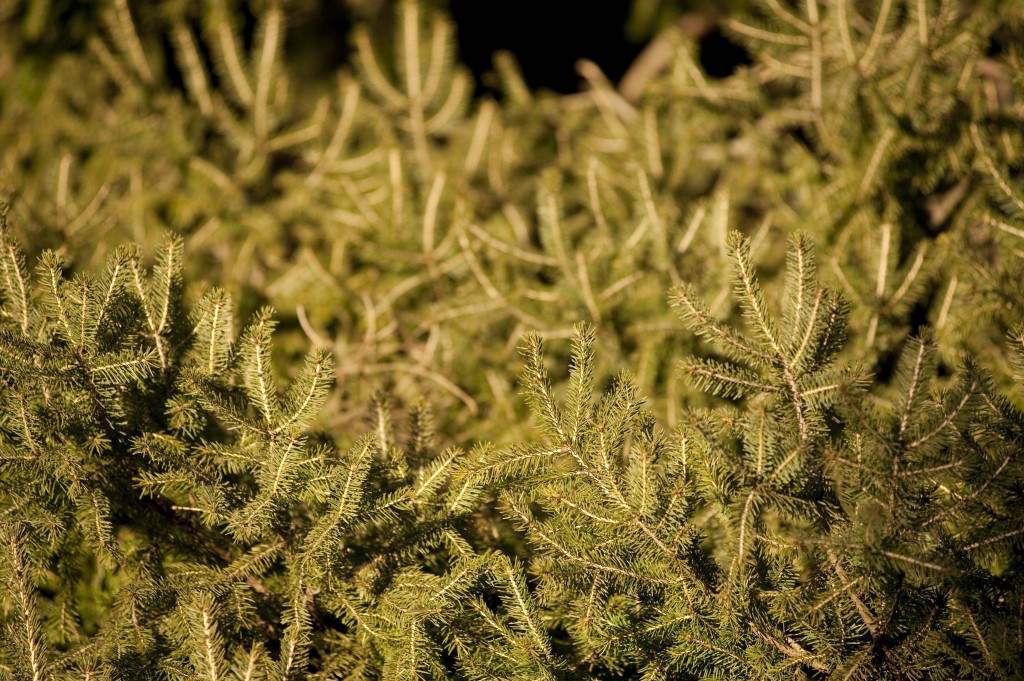 Last week we were looking at some dwarf conifers that would be suitable for the perennial garden. Remember that miniature conifers grow less than one inch a year; dwarf conifers grow 1-6 inches per year; and the epithet ‘nana’ that you often see in cultivar names means ‘dwarf’.
Last week we were looking at some dwarf conifers that would be suitable for the perennial garden. Remember that miniature conifers grow less than one inch a year; dwarf conifers grow 1-6 inches per year; and the epithet ‘nana’ that you often see in cultivar names means ‘dwarf’.
This week we will look at miniature and dwarf conifers as excellent candidates for container gardens. When choosing your conifers for a container garden make sure that you not only pay attention to the growth rate (a miniature or dwarf conifer will be your best choice), but also to its growth habit. Some conifers spread and are not suitable for containers (use them as ground covers). Look for mounding, rounded or upright forms.
Dwarf conifers thrive in containers and are comfortable with restricted root growth. Nonetheless, it is best to choose a container that is at least 4-6 inches wider than the container that your conifer came in so that you give it space to grow.
Read More
Posted in Gardening Tips on January 4 2011, by Sonia Uyterhoeven
 |
Sonia Uyterhoeven is Gardener for Public Education. |
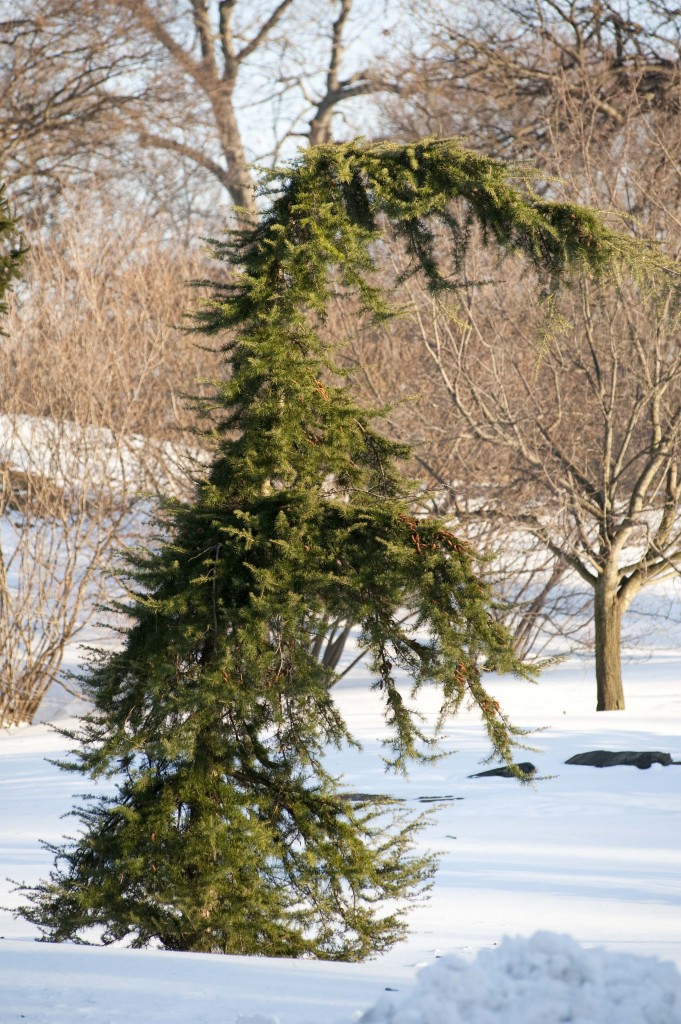 Last week we took a look at some of the more unusual conifers that grace the entrance of the Benenson Ornamental Conifer Collection at The New York Botanical Garden. This week, I am going to go for some homeowner appeal and discuss miniature and dwarf conifers.
Last week we took a look at some of the more unusual conifers that grace the entrance of the Benenson Ornamental Conifer Collection at The New York Botanical Garden. This week, I am going to go for some homeowner appeal and discuss miniature and dwarf conifers.
The American Conifer Society classifies conifers by growth rate: miniature conifers grow less than one inch per year, dwarf conifers grow 1-6 inches per year, intermediate conifers grow 6-12 inches per year and large conifers grow more than a foot per year.
Miniature and dwarf conifers are basically trees disguised as shrubs – they can snuggle up to your perennials in an unobtrusive way and are wonderful additions to your container gardens. You often see the botanical epithet ‘nana’ attached to cultivar names – it means dwarf.
In the perennial garden, dwarf conifers provide winter interest. They give a nice permanent structure to the plantings. Many of the conifers have a graceful, architectural structure that flows effortlessly and mingles gregariously in amongst the drifts of perennials.
Read More
Posted in Gardening Tips on December 27 2010, by Sonia Uyterhoeven
 |
Sonia Uyterhoeven is Gardener for Public Education. |
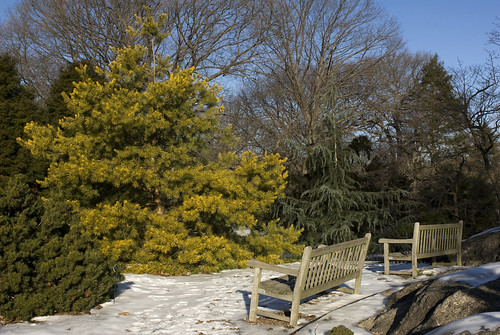 The Benenson Ornamental Conifer Collection has over 400 specimens in a 15 acre area. While a few of the conifers such as the bald cypress (Taxodium distichum), dawn-redwood (Metasequoia glyptostroboides) and larches (Larix sp.) are deciduous most of them are evergreen making this part of the garden an ideal visiting spot during the winter months.
The Benenson Ornamental Conifer Collection has over 400 specimens in a 15 acre area. While a few of the conifers such as the bald cypress (Taxodium distichum), dawn-redwood (Metasequoia glyptostroboides) and larches (Larix sp.) are deciduous most of them are evergreen making this part of the garden an ideal visiting spot during the winter months.
Conifers bear their seeds in cones. Most of them have needle or scale-like leaves. This feature gives their leaves a low-surface area that helps them conserve water and allow them to thrive in difficult situations.
While our Ross Conifer Collection features species, the Benenson Ornamental Conifer collection offers examples of cultivated varieties. Some ornamental conifers are ubiquitous in the nursery trade and others are rare finds that are generally worth searching out. They often have interesting forms, textures and foliage. They offer the homeowner much needed winter interest, add to the architecture of your garden and are great additions to any landscape.
Let’s start with the entrance of this garden and look at a few of its residents. At the entrance off to the side are two young cedars. One is a cedar of Lebanon named ‘Beacon Hill’ (Cedrus libani ‘Beacon Hill’). This is a dwarf specimen that has bright green foliage and a lovely sprawling habit that gracefully contorts itself like a ballerina.
Adjacent is a Himalayan cedar named Cedrus deodara ‘Shalimar’. This cedar has blue-green needles and light and airy branches that stretch outward in a raised horizontal fashion, drooping slightly at the tip. The shape of the branches looks like angel’s wings taking off in flight.
Two Sargent’s weeping hemlock (Tsuga canadensis ‘Pendula’) line the face of the rock wall. This graceful hemlock has no dominant leader like the Eastern hemlock (Tsuga canadensis) and the branches grow horizontally in an arching manner. It was originally discovered growing as a seedling near Beacon, New York. The Benenson has several fine specimens gracing the entrance of the garden.
One of my favorite additions to the collection can be found right near the rustic stone seating area at the entrance to the garden. It is the variegated Himalayan pine (Pinus wallichiana ‘Zebrina’). The variegated Himalayan pine has incredibly long 7 inch needles that are covered with alternating stripes in green and gold. The needles look more like a porcupine’s quill then a conifer’s needle.
These are just a few highlights that decorate the entrance to the collection. Enter the garden and you will find a vast collection of interesting ornamental conifers – some ideal for homeowners with small spaces – others specimens best left to the expansive grounds of a botanical garden.
Posted in Gardening Tips on December 20 2010, by Sonia Uyterhoeven
 |
Sonia Uyterhoeven is Gardener for Public Education. |
 One of my favorite plants from October well into December is winterberry or Ilex verticillata. It is one of those shrubs that should be put on every homeowner’s favorite list.
One of my favorite plants from October well into December is winterberry or Ilex verticillata. It is one of those shrubs that should be put on every homeowner’s favorite list.
There is nothing spectacular about winterberry early in the season. The white flowers in June are inconspicuous and for most of the season you have a handsome shrub with a decent height (generally 6-10 feet) and a nice upright oval form.
Once the fall comes the story changes – this multi-stemmed shrub is covered with a magnificent display of brightly colored berries (technically drupes). As the season progresses, the foliage colors up to a yellowish color and drops – it is one of the deciduous hollies – leaving the naked branches to display the berries in their full glory.
These hollies are dioecious (of two houses) meaning that you have male and female flower on separate plants. The females are the showy plants that are covered with the berries later in the season. The male can be tucked back in a corner out of sight.
Winterberry is a native. It is indigenous from Nova Scotia down to Florida and across to Missouri. In its native habitat it prefers moist soils and swamps but it grows prodigiously in average garden soils. In moist soils it has a habit of suckering while it retains a more upright shape in average soils.
It’s a no fuss shrub with few problems and the added benefit that the berries are a wonderful food source for winter birds. The berries take a while to soften up so they are usually passed over by migratory birds. They decorate the plant until winter residents get hungry and start to clean them off (anywhere from December to February).
They are many excellent cultivars available on the market. Buy your winterberry from a reliable nursery, so that you can be assured that the shrubs are properly labeled and that you are purchasing both male and female. Make sure that the male and female are compatible – meaning that they have similar flowering times.
One of the most popular varieties on the market is a cultivar named ‘Winter Red’ (‘Southern Gentleman’ is a good pollinator). It has great berry retention, is incredibly showy and grows to about 8 feet tall. If you are looking for a smaller plant try the compact ‘Red Sprite’ that matures to 5 feet (‘Jim Dandy’ and ‘Apollo’ are good pollinators). ‘Cacapon’ height falls somewhere in between these two reaching 6-8 feet and retains berries as well as ‘Winter Red’.
If you are looking for a different color in the fruits try ‘Winter Gold’, ‘Goldfinch’ with their golden fruits or ‘Aurantiaca’ with its orange fruits. Winterberry will brighten up your yard in the fall and early winter months. Cut off a few branches to bring inside and spice up your floral arrangements.
Posted in Gardening Tips on December 13 2010, by Sonia Uyterhoeven
 |
Sonia Uyterhoeven is Gardener for Public Education. |
Let’s look at simple ways to dress up our homes for those of us who have great aspirations and little time.
Around the holiday times we like to brighten up our homes with flowers. If you buy a nice bouquet of roses you can gussy them up for the holidays with a few simple tricks. An easy way is to hide the stems with a cranberry frog. Take a bag of cranberries (hard ones) and wash them clean. Remove any that are soft. Pour the bag into your vase and fill with water. The cranberries will keep the stems in place and create a pretty effect in a clear vase. They will float a bit at first but then settle down. The cranberries last for about a week. This is best done in a nice wide clear vase to show off the cranberries.
When filling your vase think beyond flowers. Often people embellish our floral arrangements with ferns or magnolia leaves. At this time of year substitute holiday greens in for the traditional greenery. White pine, incense cedar and hollies make three good options.
You can also place holiday ornaments into the mix. In craft stores you will find wired stakes of different sizes. Wire the ornament to the stake and stagger the ornaments throughout the greenery.
Last year, I decided to fix some lady apples onto small green stakes and add then to the arrangement. While I was breaking the rules for good arrangements (fruit and flowers don’t mix well because the ethylene gas emitted by fruits will cut down on the life span of the flowers) it certainly looked nice and lasted long enough to make me happy.
Here are a few tips to make your life easier. Search the florists, craft stores and supermarkets for interesting decorative supplies. Pine sap can easily be removed from clothing with rubbing alcohol. For your tools and hands try hand sanitizer, baby oil, WD-40 or anything oily.
Roses are wonderful but so many times you bring them home and they droop within the first few days. Cut the roses at a 45° angle with either your pruners or a sharp knife. Place immediately into lukewarm water. Floral preservative increases the longevity of flowers by up to 75% so it is worth the small investment. If you don’t have floral preservative handy there are many homemade recipes. Here is just one:
Take 1 teaspoon of sugar, 1 teaspoon of bleach and 2 teaspoons of lemon juice and 1 quart of lukewarm water. The bleach keeps the mixture clean and free from bacteria, the sugar feeds the flowers and the citrus helps the flowers to take up water by making it slightly acidic.
There are many methods for reviving drooping flowers. One that works effectively for roses is to heat water up so that it is very hot (almost but not quite boiling). Dip the stems of the drooping roses into the hot water for 30 seconds keeping the flowers away from the steam. Re-cut the stems and place them back in a clean vase. They should revive within 15 to 30 minutes.

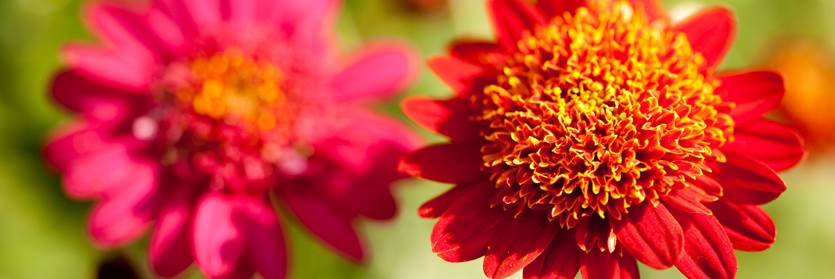

 In ancient Greek the word for theatre (theatron) means a place for seeing. As the New York born actress, Stella Adler once said ‘It is the place people come to see the truths about life’.
In ancient Greek the word for theatre (theatron) means a place for seeing. As the New York born actress, Stella Adler once said ‘It is the place people come to see the truths about life’. 





